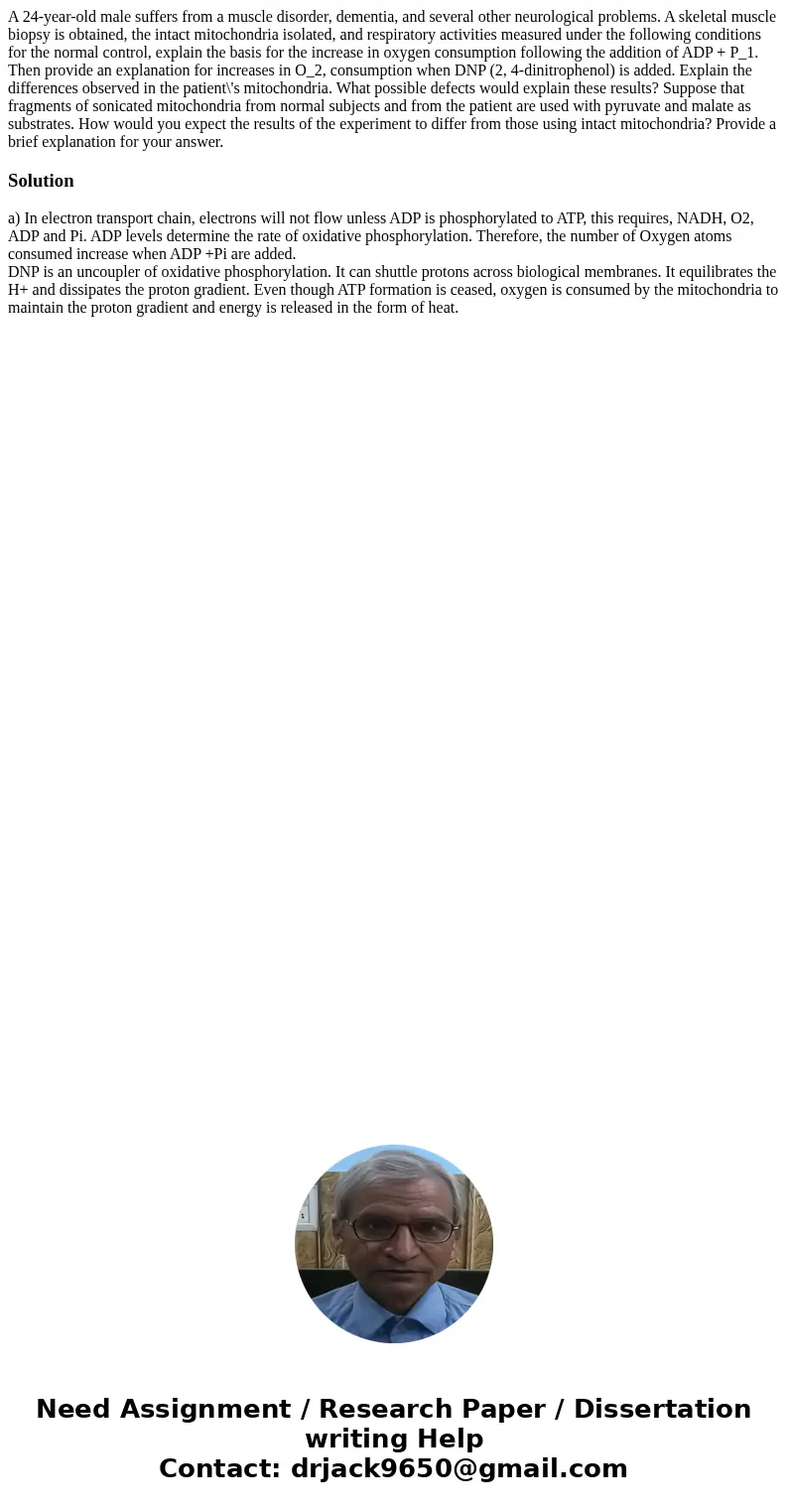A 24yearold male suffers from a muscle disorder dementia and
A 24-year-old male suffers from a muscle disorder, dementia, and several other neurological problems. A skeletal muscle biopsy is obtained, the intact mitochondria isolated, and respiratory activities measured under the following conditions for the normal control, explain the basis for the increase in oxygen consumption following the addition of ADP + P_1. Then provide an explanation for increases in O_2, consumption when DNP (2, 4-dinitrophenol) is added. Explain the differences observed in the patient\'s mitochondria. What possible defects would explain these results? Suppose that fragments of sonicated mitochondria from normal subjects and from the patient are used with pyruvate and malate as substrates. How would you expect the results of the experiment to differ from those using intact mitochondria? Provide a brief explanation for your answer.
Solution
a) In electron transport chain, electrons will not flow unless ADP is phosphorylated to ATP, this requires, NADH, O2, ADP and Pi. ADP levels determine the rate of oxidative phosphorylation. Therefore, the number of Oxygen atoms consumed increase when ADP +Pi are added.
DNP is an uncoupler of oxidative phosphorylation. It can shuttle protons across biological membranes. It equilibrates the H+ and dissipates the proton gradient. Even though ATP formation is ceased, oxygen is consumed by the mitochondria to maintain the proton gradient and energy is released in the form of heat.

 Homework Sourse
Homework Sourse